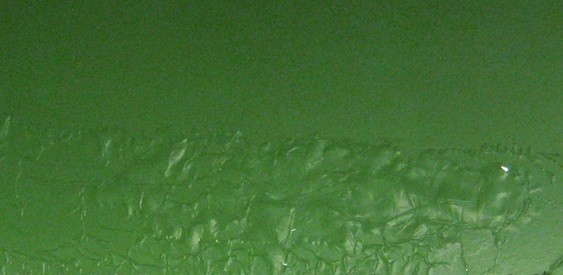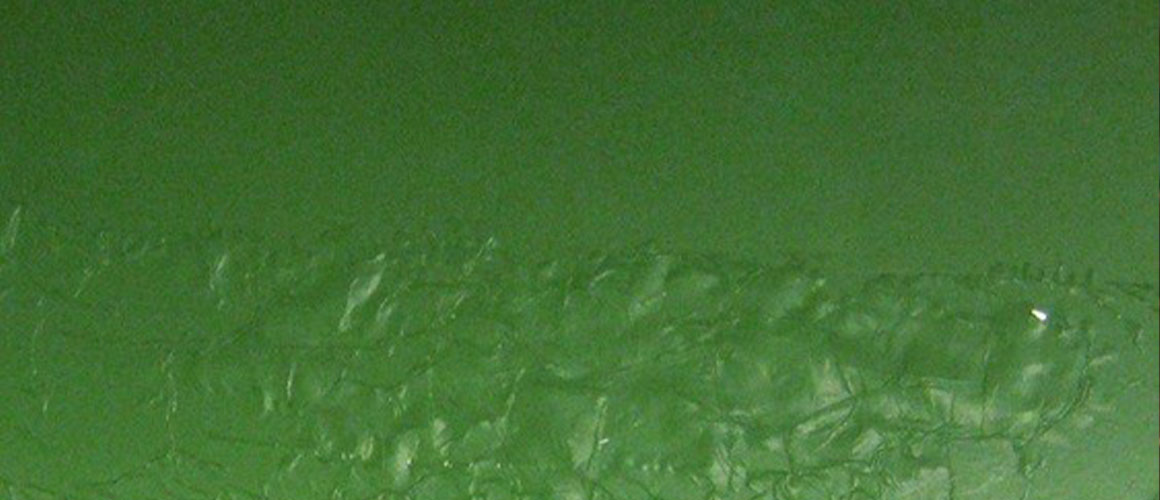Recall is the last word a biomedical business wants to hear. But that is what struck the guidewire industry last year after a voluntary recall – that the FDA classified as Class 1– for stainless steel guidewires going back to April 2013. The problem was poor adhesion of an aqueous PFOA-free PTFE coating that resulted in flakes of coating being dislodged from guidewires during in vitro procedures. According to the FDA, cardiac arrest can be caused by coating flakes that get lodged in the intravascular system.
This problem was first noticed when flakes of aqueous green PTFE were discovered in saline tanks of operating rooms during procedures using guidewires to install stents, balloons, etc. FDA reports in at least one of these instances, the coating flakes resulted in patient injury, although not fatal. This triggered the first recall alarm. Later reports of green flakes in sterilized packages of guidewires caused more concern. Solvent-base PFOA-free PTFE coatings were not involved in any recalls by the FDA.
PFOA Ban
Much of the blame for the adhesion problem has been put on the EPA action-to ban PFOA in any form of PTFE by 2015. PFOA is one of the surfactants historically used in processing of PTFE. It has recently been declared to be a potential carcinogen and the EPA insisted that it be eliminated from all PTFE used on any products in the USA. All major producers of PTFE eliminated the surfactant and all PTFE coatings used on medical devices must comply with the EPA mandate.
Now however, the medical industry is struggling with PFOA-free PTFE delamination; specifically on stainless steel guidewires and other products-presumably caused by of the removal of PFOA. Eliminating PFOA appears to have made the new EPA compliant coatings increasingly sensitive to saline, making them more vulnerable to electro/chemical attack. Under the best of conditions saline degrades the hydrophobicity of PTFE. Wetting, or contact angles are reduced depending on temperature and length of immersion.
Most aqueous PFOA-free PTFE coatings appear to be particularly sensitive to these phenomena. When immersed in even mild saline solutions-similar to those found in surgeries (0.5-0.9%) or body fluids-the coatings tend to blister, wrinkle, and peel off.

PTFE Coating Adhesion For Medical Applications
Surface Solutions Group has experienced NO DELAMINATION on guidewires that were coated with closely controlled aqueous PFOA-free PTFE formulation. However, this is not a new coating but rather a comprehensive process for ensuring adhesion. The FluoroBond® process provides adhesion of the new PFOA-free PTFE coatings equal to the “old” PTFE coatings containing PFOA.
FluoroBond® is a proprietary, multi-step process involving: (1) hyper cleaning of the wire surface, (2) application of a closely controlled aqueous formulation of PFOA-free PTFE coating to the wire, then (3) highly aggressive testing (saline soak and rigorous tape testing) to ensure adhesion.
Saline Soak Test Results (.012″ dia. 304v wire)

Essential to the FluoroBond® process, coatings ingredients and formula are very closely controlled to maximize the adhesion of PFOA-free PTFE to the hyper-clean stainless surfaces. The formula and time stage control between the blending steps for the formulation and the application of the PFOA-free PTFE is very precise.
Consistent micron tolerance coating deposition on guidewires of lengths of 2 meters and longer is a difficult task. SSG uses 100% robotic, electrostatic coating application production lines. Consistent coating thickness is what customers receive. This capability is verified with test protocols and other quality controls that prove the consistency of the FluoroBond® process.
A Tested Process For Making PTFE Coatings
Post-cure testing takes coating adhesion testing to a new level. First, samples of coated wire are immersed in a 0.9% saline solution and held consistently at 80° F for 30 minutes. Since this is at the upper limit of surgical saline it is considered a worst-case scenario for the coating.
Once out of the saline, the samples are rinsed, dried and subjected to a tape-pull adhesion test that is beyond conventional practices. Normal ISO 2409 or ASTM 3349-02 test tapes have an adhesive strength of .22875 LBF/in. SSG now uses tapes with 3 times the adhesive strength. Both tapes have excellent adhesion to PTFE surfaces.

NO SSG COATED WIRE TESTED AFTER COATING WITH THE FLUOROBOND® PROCESS HAS EVER FAILED IN SERVICE.
Click to view/download: Adhesion Article PDF
